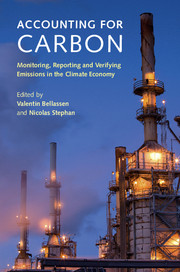Book contents
- Frontmatter
- Contents
- List of figures and map
- List of tables
- List of boxes
- Notes on contributors
- Acknowledgements
- 1 Introduction: key notions and trade-offs involved in MRVing emissions
- Part I MRV of territorial/jurisdictional emissions
- Part II MRV of industrial sites and entities
- Part III MRV at offset project scale
- 11 Trendsetter for projects: the Clean Development Mechanism
- 12 Case study 1: monitoring requirements for projects reducing N2O emissions from fertilizer use across standards
- 13 Case study 2: monitoring requirements for reforestation and improved forest management projects across standards
- 14 Case study 3: monitoring requirements for fugitive emissions from fuels in the CDM
- 15 Synthesis
- Index
- References
11 - Trendsetter for projects: the Clean Development Mechanism
from Part III - MRV at offset project scale
Published online by Cambridge University Press: 05 March 2015
- Frontmatter
- Contents
- List of figures and map
- List of tables
- List of boxes
- Notes on contributors
- Acknowledgements
- 1 Introduction: key notions and trade-offs involved in MRVing emissions
- Part I MRV of territorial/jurisdictional emissions
- Part II MRV of industrial sites and entities
- Part III MRV at offset project scale
- 11 Trendsetter for projects: the Clean Development Mechanism
- 12 Case study 1: monitoring requirements for projects reducing N2O emissions from fertilizer use across standards
- 13 Case study 2: monitoring requirements for reforestation and improved forest management projects across standards
- 14 Case study 3: monitoring requirements for fugitive emissions from fuels in the CDM
- 15 Synthesis
- Index
- References
Summary
Context
The Clean Development Mechanism (CDM) in brief
The existing international climate regime set up by the Kyoto Protocol in 1997 imposed quantitative limits on greenhouse gas (GHG) emissions of developed countries and economies in transition that are included in Annex B to the Kyoto Protocol. These limits are enounced in countries’ emissions quotas–Assigned Amount Units (AAU). The Kyoto Protocol (UN, 1998) incorporates four flexibility mechanisms that are supposed to help governments maximize the economic efficiency of achieving their commitments:
• “Bubbling” (article 4) permits a group of Annex B countries to redistribute their GHG emissions reduction commitments, as it was done by the European Union countries;
• Joint Implementation (article 6) permits Annex B countries to host emissions reduction projects that generate tradable Emission Reduction Units (ERU);
• The Clean Development Mechanism (article 12) permits developing (non-Annex B) countries to host emissions reduction projects that generate tradable Certified Emission Reductions (CERs);
• International Emissions Trading (article 17) permits Annex B countries to directly trade their Kyoto allowances (AAUs).
With over 6,500 registered projects and over 1.3 billion tCO2e of GHG emissions reduced in developing countries as of June 2013 (UNEP Risoe, 2014), the CDM is the largest carbon offset scheme in the world. According to the CDM Policy Dialogue report (UNFCCC, 2012), the CDM raised over US$215 billion in mostly private investments in climate change mitigation over ten years. This figure is 10–20 times higher than the value of 1.3 billion tons CO2e of carbon assets generated. Indeed, the leverage effect of carbon finance enables raising private investments in climate-friendly projects that may significantly exceed revenues from the sale of carbon credits (Shishlov and Bellassen,2013).
Being an offsetting mechanism, the CDM represents an environmental “zero-sum” game, whereby emissions reductions generated in developing countries can be used for compliance by developed countries and individual companies (Figure 11.1).
- Type
- Chapter
- Information
- Accounting for CarbonMonitoring, Reporting and Verifying Emissions in the Climate Economy, pp. 341 - 389Publisher: Cambridge University PressPrint publication year: 2015
References
- 3
- Cited by



